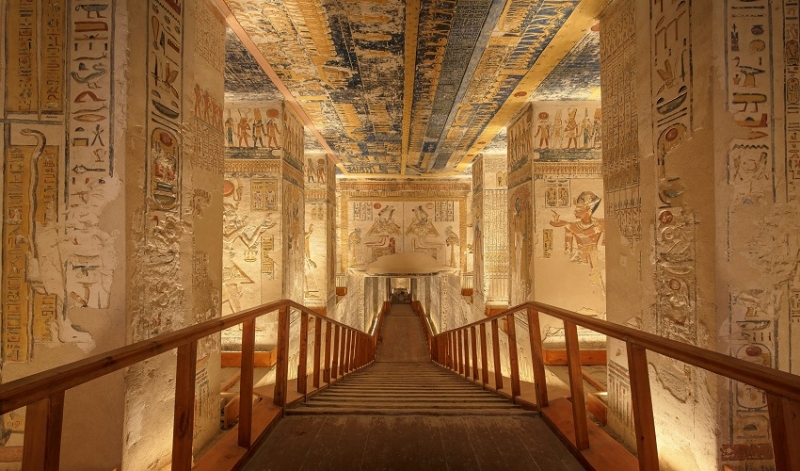
The Secrets of Resurrection at The Valley of the Kings and Queens
The Valley of the Kings and Queens is an isolated underground cemetery that was built for the pharaohs and nobles of the new kingdom, which ruled Egypt from the 16th to the 11th century BC. It's located on the West Bank at Luxor, once the ancient city of Thebes, the southern settlement in which the dynasty began. Hidden away in the hills, the tombs were designed to be far from the prying eyes of robbers, allowing the regal mummies stored within to keep all their gold, silver, food and statues to help them in the afterlife.
Much has been uncovered but there is plenty more to find, believe archaeologists. The current total stands at 63 tombs, 26 of which held kings and the rest nobleman.
"There are more undiscovered tombs around, like those of Ramses VIII and Thutmose II," Dr Zahi Hawass, famous archaeologist , says. "Not all of the 63 tombs are open every day to the public -- we need to protect them from damage caused by the carbon dioxide visitors release just by being inside them and breathing." he explains. "Some tombs need more protection while others need to be closed completely in order to save the ancient paintings."
Dr.Zahi says they also use lighting in the Valley of the Kings and Queens so that people will be able to visit the tombs in the evening. This helps protect the painting by spreading the number of tourist visits out, allowing the tombs to escape the extra heat and moisture that builds up over the course of the day.
The Valley of the Kings is most famous for the tomb of Tutankhamen, which was discovered in 1922 by Howard Carter and remains the best preserved royal tomb yet found. The treasures unveiled there are now. Stored in Cairo's Egyptian Museum, bt compared to the pharaohs that came before and after, Tutankhamen's tomb was modestly furnished. He died unexpectedly young, leaving no time for a royal tomb to be prepared for him.
There are other unique spots too to enjoy luxor day tours, like the tomb of Ramses VI which was originally built for Ramses V and consisting of three chambers and a fourth pillared chamber which was added later. The chambers are lined with the astonishing inscriptions of the Book of Gates, the Book of Caverns and the Book of Day and Night and portions of the Book of Dead are found in the fourth chamber, along with images of the sky goddess, Nut. According to Salima Ikram, Professor of Egyptology at the American University in Cairo, the Valley of Queens tombs are smaller than in the Kings Valley. The former usually consist of a long narrow corridor with. Several side chambers, and at the end the burial chamber. There are between 75 and 80 tombs, where the wives of Pharaohs, their sons, daughters and nobles were buried during the Ath, 19th and 20th Dynasties.
One of the most important tombs in the valley is the one that belongs to the famous Queen Nefertiti, the wife of King Ramses II. "This beautiful tomb was in a bad condition because of the salt crystals seeping through its poor-quality limestone. It was restored and reopened for visitors, to enjoy the mastic of the colors and stories of the daily life of the the Queen and the King .

